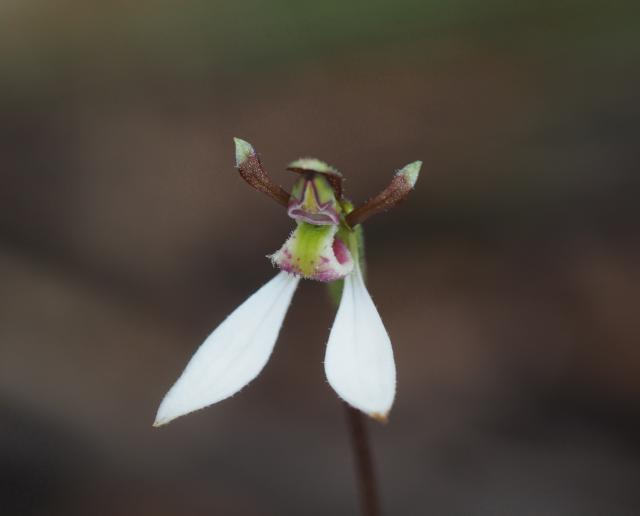By Tanya Steele
The Eastern Band orchid was spotted for the first time at the Juliet Avenue Bushland Reserve last week just in time for Easter.
Mount Toolebewong and District Landcare group treasurer volunteer Karen Garth recorded the flower in the group’s logs.
“It’s not an uncommon orchid, but it hasn’t been recorded by us at that reserve before,” she said.
The Juliet Avenue Bushland has been monitored by environmental groups since 2015 to observe the native plant species that flower there, but they have not recorded the orchid until this year.
Usually named Parson’s Band the orchid has more recently been known as the Eastern Band orchid or Eriochilus cucullatus and Ms Garth took the opportunity for some fun.
“I just thought I’d use a play on words and put a post out on Easter Sunday,” she said.
The orchid photo and the caption “Happy Eastern Bunny Orchid Day!” were posted to social media on Sunday 9 April.
Landcare groups monitor a number of sites to log different species of native plants and how they are growing in the area.
“We walk once a month and just record when we see things flowering,” she said.
Ms Garth credits the Yarra Ranges Council with the upkeep of the bushland and encourages people to wander along the small natural pathways and see what the bushland has to offer.
“It’s not just boring grassland with a couple of trees, there is more there,” she said.
The find was shared amongst orchid enthusiasts, including Wendy Probert who is one of the directors of the Australian Orchid Foundation.
“I think it’s positive to have a comprehensive record of the species when they emerge,” she said.
Ms Probert has worked and explored the Yarra Valley area for her whole life and remembers finding orchids at the old station yards in Ferntree Gully.
She is pleased the Eriochilus cucullatus has been logged in the area by the landcare group.
“Because orchids have such precise and complex requirements for fungi, pollinators, and the pollinators’ food plants, they are good indicator species,” she said.
“it is important to keep records of species over time, as that is a way of judging the health of the habitat and how it may be changing in response to climate or management activities.”
Whilst spring flowers get a lot of hype, you can find orchids anytime throughout the year, but they can be hard to spot.
This particular orchid is significant to several sites within the Yarra Ranges and people are encouraged to look and take pictures but to never pick native orchids.
“All year around there will be orchids flowering somewhere in the region,” Ms Garth said.







